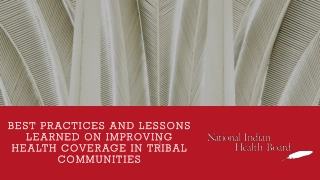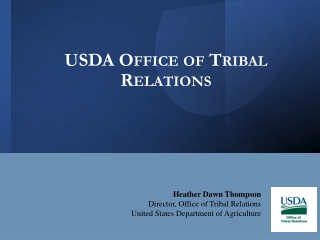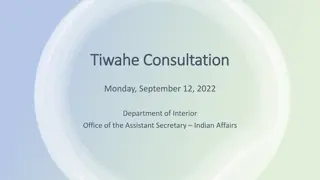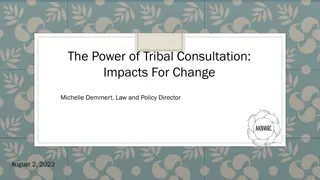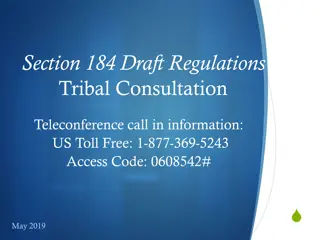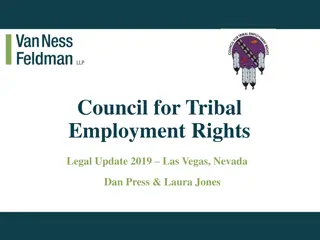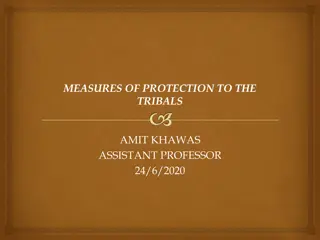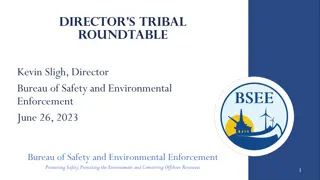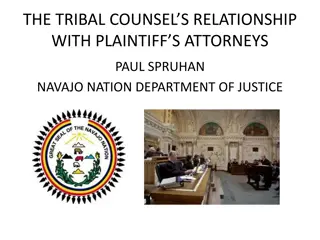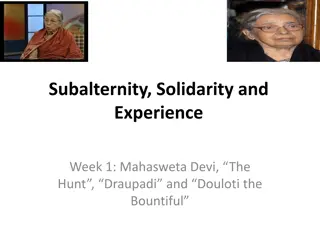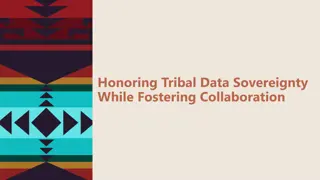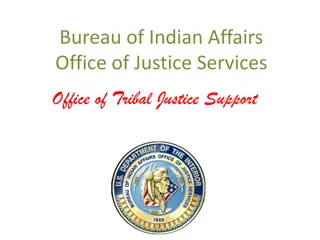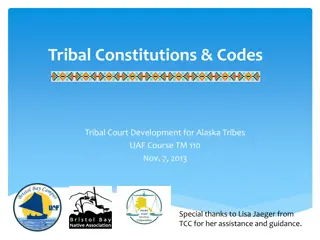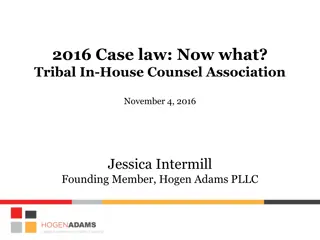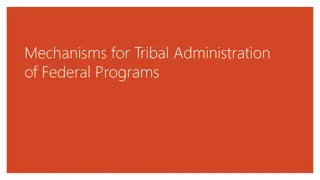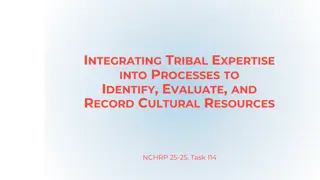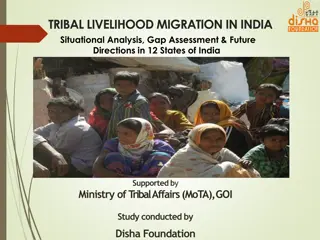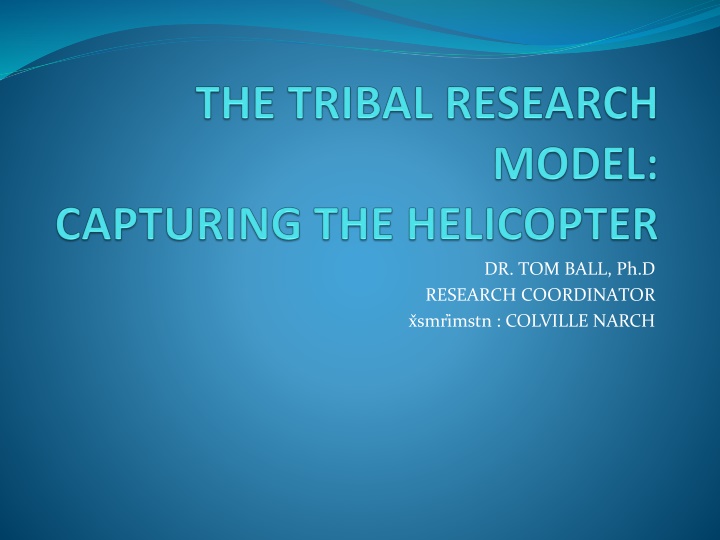
Tribal Research Empowerment: NARCH Mission and Community Model
Explore the journey of Dr. Tom Ball and the Colville Research Center in empowering tribal communities through research initiatives, including phases, challenges, and key projects like the Men's Diabetes Study. Learn about the mission to capture the helicopter and be the first tribe conducting research from the reservation. Discover the impact of the Community Empowerment Model and the transition to Tribal Research implementation, focusing on capacity building and data mining programs.
Download Presentation

Please find below an Image/Link to download the presentation.
The content on the website is provided AS IS for your information and personal use only. It may not be sold, licensed, or shared on other websites without obtaining consent from the author. If you encounter any issues during the download, it is possible that the publisher has removed the file from their server.
You are allowed to download the files provided on this website for personal or commercial use, subject to the condition that they are used lawfully. All files are the property of their respective owners.
The content on the website is provided AS IS for your information and personal use only. It may not be sold, licensed, or shared on other websites without obtaining consent from the author.
E N D
Presentation Transcript
DR. TOM BALL, Ph.D RESEARCH COORDINATOR x smr imstn : COLVILLE NARCH
Part I: The Part I: The Project Begins Project Begins
Part 2: The Part 2: The Project Ends Project Ends Problems with Problems with sustainability and sustainability and adherence adherence
NARCH Mission: Capture the Helicopter Be the first Tribe that is conducting their own research from the reservation.
The Community Empowerment Model: Tom Ball, Alison Ball, Phil Fisher Phase I Phase II Phase III PhaseIV Phase V Phase VI Phase VII Indian Community Research Community
xsmrimstn Colville Research Center Research Community Phase 1 Phase 2 Phase 3 Phase 4 Phase 5 Phase 6 Research Community Recruited by academic community Data Published and Presented by academic community Data Analyzed by academic community Problem Identified by academic community Data Collected from Indian Subjects by academic community Resources brought in by academic community
Tribal Research Center Research Community Phase 1 Phase 2 Phase 3 Phase 4 Phase 5 Phase 6 Research Community Recruited by Tribe Data Published and Presented by Tribe Problem Identified by Tribe Data Collected from Indian Subjects by Tribe Data Resources brought in by Tribe Analyzed by Tribe
xsmrimstn : How are we Implementing Tribal Research? Admin Core: Building capacity for future research Capacity Building Core: Building capacity for programs to mine their own data Research Pilot Project: Men s Diabetes Study: two tribal members hired to work on project
Administrative Core Facilitating Research by building into the administration processes that will continue to support research activities for the tribe.
continued.. Sub-contracting with outside organizations to provide technical assistance in specialized capacities such as curriculum development, epidemiology, or biostatistics.
Continued Budgeting Tribal budgets vs. Federal budgets
Administrative Core continues.. Tribal Scientific Board is made up of Tribal Council, Office of Reservation Attorneys, Program Managers from Environmental Trust, History & Archeology, CFO, Traditional leaders. Quarterly all day meetings IRB processes Data Sharing Agreements Research Agenda s Policy & Procedures Finance
Capacity Core Building sustainability, data capacity in Health Programs to organize, collect, and analyze data data
Why Collect Grant Applications Program Improvement Resource Allocation Tribal Council Data Mining Data Analysis Study Patterns of Health & Disease Why Collect D Data? ata?
How are we doing it? How are we doing it? Meet with individual programs. Is the data collected currently answering the questions program managers, directors, CBC? Customize data collection. Assist in developing ways to collect data, Excel, Access, etc. Collect data sets from programs. Determine how the datasets will be shared, email, secure server, USB, etc.
Shifting the Research Paradigm Political Tribal Research Code Established Resources brought into Community Emotional Collected to tribe and Mental Data Data presented Economical Useof Community Experts Cultural Physical published Spiritual Data Analyzed Problem Identify Goal of research is Healing social change Social
Building Your Own Colville Tribe has 16 Ph.D.'s Need to have a place to do research Student research academy cohort model 10 weeks Research methodology Research project Present at conferences Follow up with support; future summer placements, mentoring, small research grants
Building Your Own Cont. Training: GIS (Geographic Information Systems) ArcGIS I: Introduction to GIS ArcGIS II: Essential Workflows Microsoft SQL Server Querying Microsoft SQL Server Administering SQL Server Databases Implementing Data Warehouse with SQL Server
Cont... Excel: Excel 2013 Parts 2 & 3 Intermediate to Data Mining Microsoft Access Beginning & Advanced Human Subjects Grants Management & Financial Accountability
Negative Perception of Research Annual Colville Research Conference We ve been researched to death We never hear back from researchers See Tribal students/family members reporting back to community their research findings. See the potential for research to help the people when research is controlled by the people. Data ownership: Sovereignty issue. It is your data. Measure attitude change.
The NARCH Mission Capture the Helicopter Tribal Research Model Colville Researchers doing Colville Research Limlimt.

